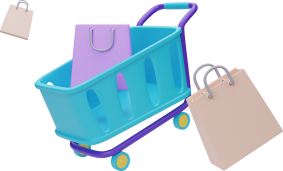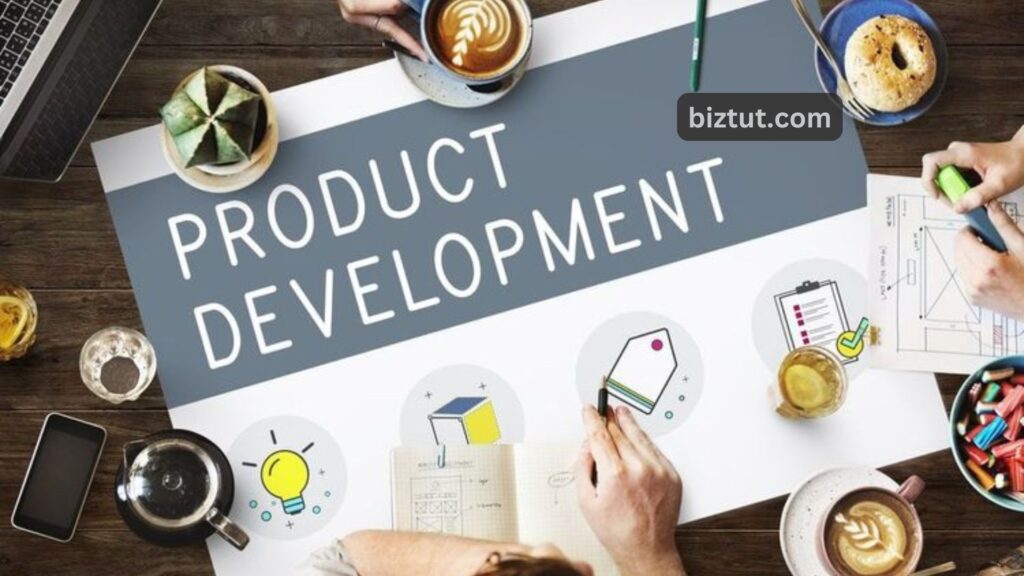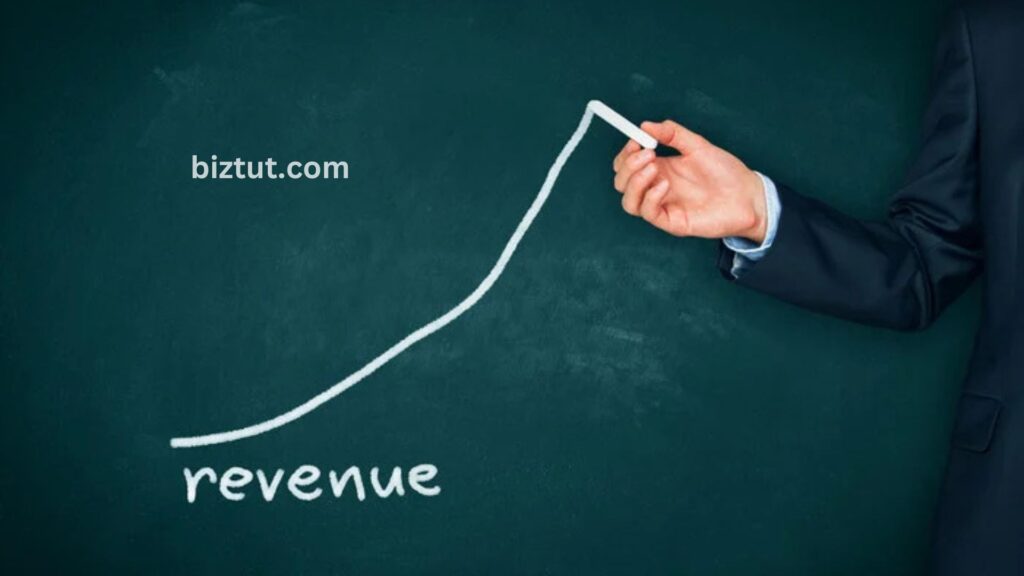New products and services are what keep a business alive and thriving. Investing in them isn’t just a nice-to-have – it’s essential for growth and profit.
However, jumping into product development comes with risks, and it requires careful planning and organization.
This guide walks you through the key stages of developing a product or service, helping you understand when the timing is right to get started.
You’ll learn how a step-by-step approach can help you make smart decisions about budgeting and investing. Plus, you’ll find tips on building the right development team and managing your project effectively.
The Lifecycle of Products and Services
The lifecycle of any product or service has five main stages:

- Development – Your product or service is merely a concept at this point. You’re investing a lot in research and development.
- Introduction – Now, you launch your product or service and spend heavily on marketing to build awareness.
- Growth – Your product or service is gaining traction with few competitors, sales are increasing, and profit margins look good. This is a good time to find ways to reduce production costs.
- Maturity – Sales growth slows or even stops. You’ve likely cut production and marketing costs, but competition has increased, driving prices down. This may be the ideal time to consider investing in a new product.
- Decline – Newer products or services have entered the market, competition is high, and sales and profits are dropping. Extra marketing won’t help much unless you can find new markets.
Managing the Lifecycle
Knowing where each product or service is in its lifecycle is key to staying profitable. Researching your market and competitors will give you this insight (see our guide on understanding competitors).
You can also extend a product’s lifecycle with an “extension strategy,” such as:
- Boosting promotional efforts
- Adding new features or updating the design
- Exploring new markets
However, this only delays the decline. Ideally, you should always have new products or services ready to launch as older ones wind down, so that at least one offering is reaching its peak.
Developing Your Ideas
Developing a new product or service is a big deal, with a lot on the line. To reduce risks and make smart choices about where to invest time and resources, here are a few things to keep in mind:

- Will your new product or service meet customer needs? Think about its design, ease of use, and any performance benefits.
- Is it technically doable? Can you meet the design, resources, and manufacturing needs for this product or service?
- What are your goals? Make sure the new product or service aligns with your business strategy and plays to your strengths.
Having a clear plan helps you better assess the risks. Here are a few more tips:
- Talk with your team about your ideas—team members might have insights you hadn’t considered.
- Get input from suppliers and business partners; they may have useful expertise.
- Test out lots of ideas early on; it’s relatively inexpensive to see which are most promising. Be willing to drop ideas that don’t meet your criteria before you invest heavily.
- Ask your best customers for feedback on your plans.
- Consider regulations and make sure your product or service meets legal requirements.
- Don’t ignore how your plans will affect the environment.
Finally, think beyond the immediate potential of your new product or service and consider how it fits into your long-term goals.
Match Products and Services to Market Needs
New products and services need to offer real benefits that meet your customers’ needs—and to figure out what those are, you’ll need some research.
Market research, like surveys and focus groups, can help you get a clear picture of what customers are looking for.
Remember, while the end user might be your main customer, others may be involved too. For example, if you’re launching a new DIY product, think about how it’ll appeal to retailers for stocking and to professional decorators for usability. Or, if it’s a toy, consider both what kids and their parents will think.
Know Your Competition
Your product or service not only has to meet customer needs but also needs to stand out against the competition.
To make an impact in the market, your product needs a unique selling point—a feature that makes it different from what’s already out there. Before launching, ask yourself:
- How are customers’ needs currently being met?
- Why would customers choose your product over the competition, both now and in the future?
- What risks are you willing to take to introduce your product to this market?
Having clear answers to these questions will set you up for a stronger launch.
Pricing Your Proposed Service or Product
Setting a pricing strategy for a new product or service is a key part of development. You’ll want to think about pricing as soon as you decide to move forward with an idea since it affects how much you can invest in the project.

Here are a few things to consider:
- Customer Value: Think about the benefits your product offers compared to competitors. Will customers feel the price is worth it?
- Market Timing: Are you first to market with something revolutionary, or are you following a trend?
- Sales Channels: The channels you choose will impact your marketing and distribution costs.
- Launch Speed: Decide how quickly you want your product to gain traction.
- Product Lifespan: How long do you expect your product to stay relevant?
- Cost Coverage: Make sure your pricing covers your costs.
A smart pricing strategy can help boost sales and control demand.
The Project Development Process
A good development process for new products or services should be broken down into key stages:
- Idea Generation – Collect new ideas.
- Idea Filtering – Sort through ideas and keep only the ones worth pursuing.
- Concept Definition – Define details like technical feasibility and market potential. For new products, start thinking about the design now.
- Strategic Analysis – Make sure your ideas fit with your overall business strategy.
- Concept Development – Create a prototype or a trial version of the service.
- Testing and Finalizing – Test your product or service and adjust it based on feedback from customers, manufacturers, and support teams. Decide on the best timing and approach for a pilot launch.
- Product Launch – The trickiest part. Before setting a date, plan how you’ll sell, promote, and support the product. It’s important to get it right the first time, but also weigh any launch delays against the risk of competitors getting there first.
Some of these steps may overlap, but having a structured process will help you keep costs and timing in check.
Creating a Project Team
Every new product or service needs a dedicated development team.

When building your team, include people with different skills. You might need a creative ideas person, a technical expert, a marketing specialist, someone to source materials, and someone familiar with supply-chain challenges.
It’s also important that everyone understands and supports your business goals.
There are different ways to structure your team, depending on what works best for your business. For example, team members could:
- Work together as one unit on a single project, reporting to a project manager.
- Work only on one project but stay within their own departments, reporting to department heads who report to the project manager.
- Work on multiple projects at once, with both a department head and a project manager tracking their progress.
Every team needs a project manager to lead, coordinate, and motivate. You can find more tips on managing a development project in this guide.
Investment and Cost Control
Developing new products and services is naturally risky, so it’s important to plan investments carefully and keep costs in check.
Here’s what to keep in mind:
- Include future investments in your business strategy.
- Plan exactly where your investment will go.
- Justify the spending for each project.
- Control your costs along the way.
Before investing, think about the potential benefits for your business versus the risks involved.
Phasing New Product Development
To reduce risks, consider phasing your investments. By reviewing each phase of a project, you can spot products or services that might not succeed before spending too much. If a project meets your criteria, it can move to the next stage; if not, it’s cut.
Finding Support
There are government grants and tax incentives available to support research and development of new products.
Keeping Costs Under Control
Cost management is key to preventing budgets from spiraling out of control. To keep expenses in line:
- Estimate development costs ahead of time.
- Monitor spending throughout development.
- Use phased investment as described above.
To estimate costs, you can take either:
- A top-down approach: use similar past projects as a guide.
- A bottom-up approach: team members estimate their costs, and the project manager tallies these to get the total.
Typical costs include staffing, materials, technology, design, market research, prototyping, and any additional overhead.
Manage a Development Project
Project managers play a crucial role in the successful development of new products or services. They’re responsible for:

- Managing costs and resources – check out the section on investment and cost control in this guide for more details.
- Setting the main specifications for the product or service.
- Coordinating the development team – see the guide’s section on building a project team for more.
- Creating a timeline for the development process.
- Problem-solving when issues come up.
Also Read: How to Grow a Business with Limited Funds?
Creating a Timeline
The project manager should set up a clear path with key milestones. Using SMART goals (specific, measurable, agreed upon, realistic, and time-bound) can help keep the team on track. Breaking down the project into stages also makes it easier to monitor progress.
However, plans need some flexibility. Unexpected challenges can come up, leading to adjustments in the project’s specifications or timeline.












